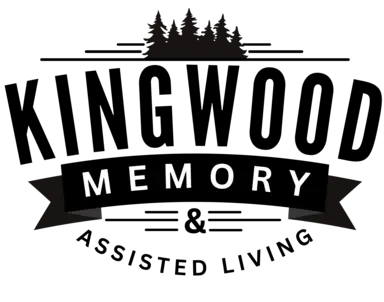Exploring Neuromodulation: Mechanisms, Applications, And Future Directions
Neuromodulation encompasses a diverse array of techniques aimed at modulating the activity of the nervous system to treat neurological and psychiatric disorders, restore function, and enhance cognitive performance. From invasive interventions such as deep brain stimulation (DBS) to non-invasive approaches like transcranial magnetic stimulation (TMS), neuromodulation techniques have revolutionized the field of neuroscience and opened new avenues for therapeutic intervention. This comprehensive analysis delves into the mechanisms, applications, and future directions of neuromodulation, highlighting its transformative potential in understanding brain function and treating neurological conditions.
**Mechanisms Of Neuromodulation**
– Electrical Stimulation:
Electrical stimulation techniques, such as DBS, transcranial direct current stimulation (tDCS), and vagus nerve stimulation (VNS), deliver electrical currents to specific brain regions or neural circuits to modulate neuronal activity. DBS involves implanting electrodes into targeted brain structures and delivering high-frequency electrical pulses to alleviate symptoms of movement disorders, epilepsy, and psychiatric conditions. tDCS and VNS provide non-invasive alternatives for modulating cortical excitability and neuromodulatory pathways, offering potential therapeutic benefits for mood disorders, chronic pain, and cognitive impairment.
– Magnetic Stimulation:
Magnetic stimulation techniques, such as TMS and repetitive TMS (rTMS), utilize magnetic fields to induce electrical currents in targeted brain regions, modulating neuronal excitability and synaptic transmission. TMS is FDA-approved for the treatment of depression and has shown promise in treating other neuropsychiatric disorders, including schizophrenia, bipolar disorder, and addiction. rTMS protocols can be tailored to target specific cortical regions implicated in mood regulation, executive function, and cognitive control, offering personalized and targeted neuromodulatory interventions.
– Chemical Modulation:
Chemical neuromodulation techniques involve the administration of pharmacological agents, neurotransmitters, or neuromodulators to modulate synaptic transmission, receptor activity, and neurotransmitter levels in the brain. Pharmacological interventions such as selective serotonin reuptake inhibitors (SSRIs), dopamine agonists, and NMDA receptor antagonists are commonly used to treat psychiatric disorders, movement disorders, and chronic pain conditions, targeting specific neurotransmitter systems and neural circuits implicated in disease pathology.
**Applications Of Neuromodulation**
– Movement Disorders:
Neuromodulation techniques, including DBS and spinal cord stimulation (SCS), have revolutionized the treatment of movement disorders such as Parkinson’s disease, essential tremor, and dystonia. DBS electrodes are implanted into deep brain structures such as the subthalamic nucleus or globus pallidus interna, modulating abnormal neuronal activity and restoring motor function. SCS delivers electrical pulses to the spinal cord, alleviating symptoms of chronic pain and movement disorders by disrupting pain signaling pathways and modulating sensory processing.
– Neuropsychiatric Disorders:
Neuromodulation holds promise for treating neuropsychiatric disorders such as depression, anxiety, obsessive-compulsive disorder (OCD), and post-traumatic stress disorder (PTSD). TMS has emerged as a non-invasive treatment option for depression, delivering magnetic pulses to the dorsolateral prefrontal cortex to modulate mood-regulating circuits and alleviate symptoms of depression. DBS and VNS have also shown efficacy in treating treatment-resistant depression and other mood disorders, offering alternative treatment modalities for patients who do not respond to conventional therapies.
– Cognitive Enhancement:
Neuromodulation techniques have garnered interest as potential tools for enhancing cognitive function, memory consolidation, and learning ability. tDCS and TMS can modulate cortical excitability and plasticity, facilitating synaptic strengthening and neural network reorganization underlying cognitive processes. Non-invasive brain stimulation techniques have been investigated for improving attention, working memory, and executive function in healthy individuals and patient populations, offering potential applications in cognitive rehabilitation and neuroenhancement.
**Future Directions And Challenges**
– Personalized Medicine:
Advancements in neuroimaging, electrophysiology, and computational modeling are driving the development of personalized neuromodulation approaches tailored to individual patients’ neuroanatomy, physiology, and symptomatology. The integration of neuroimaging biomarkers, genetic profiling, and machine learning algorithms holds promise for optimizing electrode placement, stimulation parameters, and treatment outcomes, maximizing therapeutic efficacy and minimizing adverse effects.
– Closed-Loop Systems:
Closed-loop neuromodulation systems, also known as adaptive or responsive systems, dynamically adjust stimulation parameters in real-time based on feedback from neural activity, physiological signals, or behavioral responses. Closed-loop DBS systems monitor neural biomarkers associated with disease state or symptom severity and deliver stimulation pulses accordingly, optimizing therapeutic benefits while minimizing side effects and power consumption. These closed-loop approaches offer potential advantages in improving treatment outcomes, reducing healthcare costs, and enhancing patient autonomy and quality of life.
– Ethical And Regulatory Considerations:
The widespread adoption of neuromodulation techniques raises important ethical, legal, and regulatory considerations related to patient safety, informed consent, privacy, and access to care. Ethical guidelines and regulatory frameworks are needed to ensure the responsible and equitable implementation of neuromodulation technologies, protect patient rights, and safeguard against potential misuse or unintended consequences. Collaboration between researchers, clinicians, policymakers, and patient advocacy groups is essential for addressing these ethical and regulatory challenges and advancing the field of neuromodulation in a responsible and ethical manner.
**Conclusion**
Neuromodulation represents a powerful and versatile approach for modulating brain function, treating neurological and psychiatric disorders, and enhancing cognitive performance. From electrical and magnetic stimulation techniques to chemical neuromodulation approaches, the field of neuromodulation offers a diverse array of interventions tailored to specific patient needs and therapeutic goals. Advances in personalized medicine, closed-loop systems, and ethical and regulatory frameworks will shape the future of neuromodulation, unlocking new possibilities for improving brain health, restoring function, and enhancing quality of life for individuals living with neurological conditions.
Thank you for taking the time to explore Kingwood Memory Care & Assisted Living. We’re committed to providing compassionate and personalized care for individuals with memory-related challenges. If you have any questions or would like to learn more about our services, please don’t hesitate to reach out to us at 281.892.1400 or via email at info@kingwoodmemorycare.com. We’re here to support you and your loved ones on this journey.





